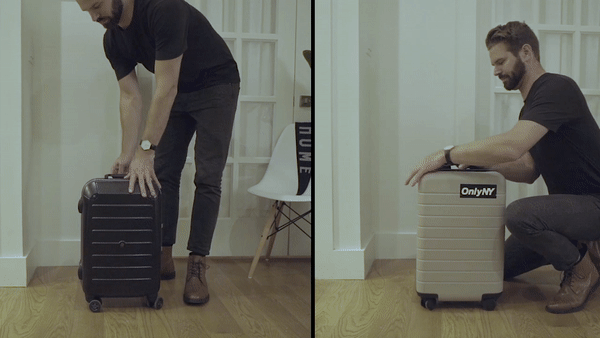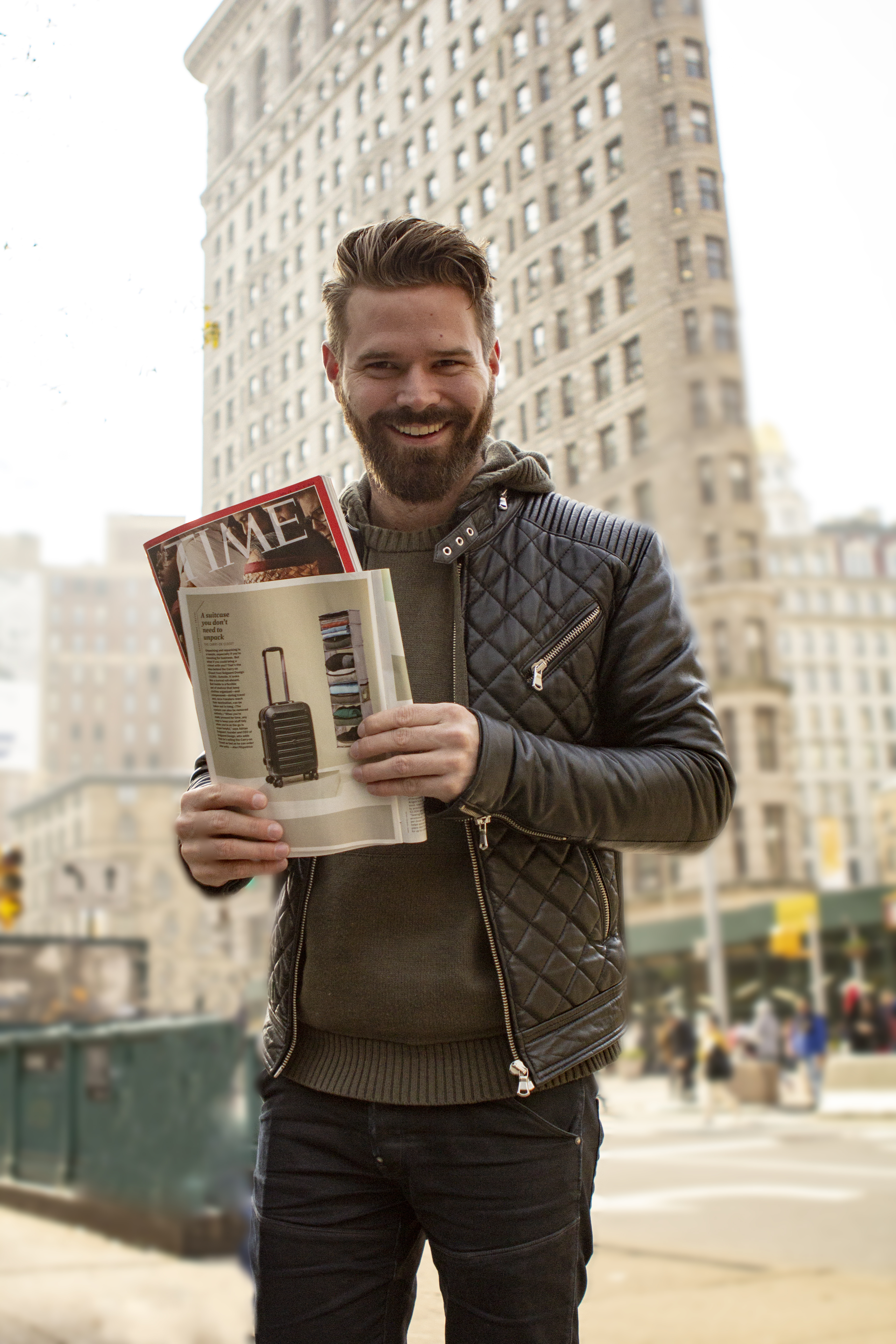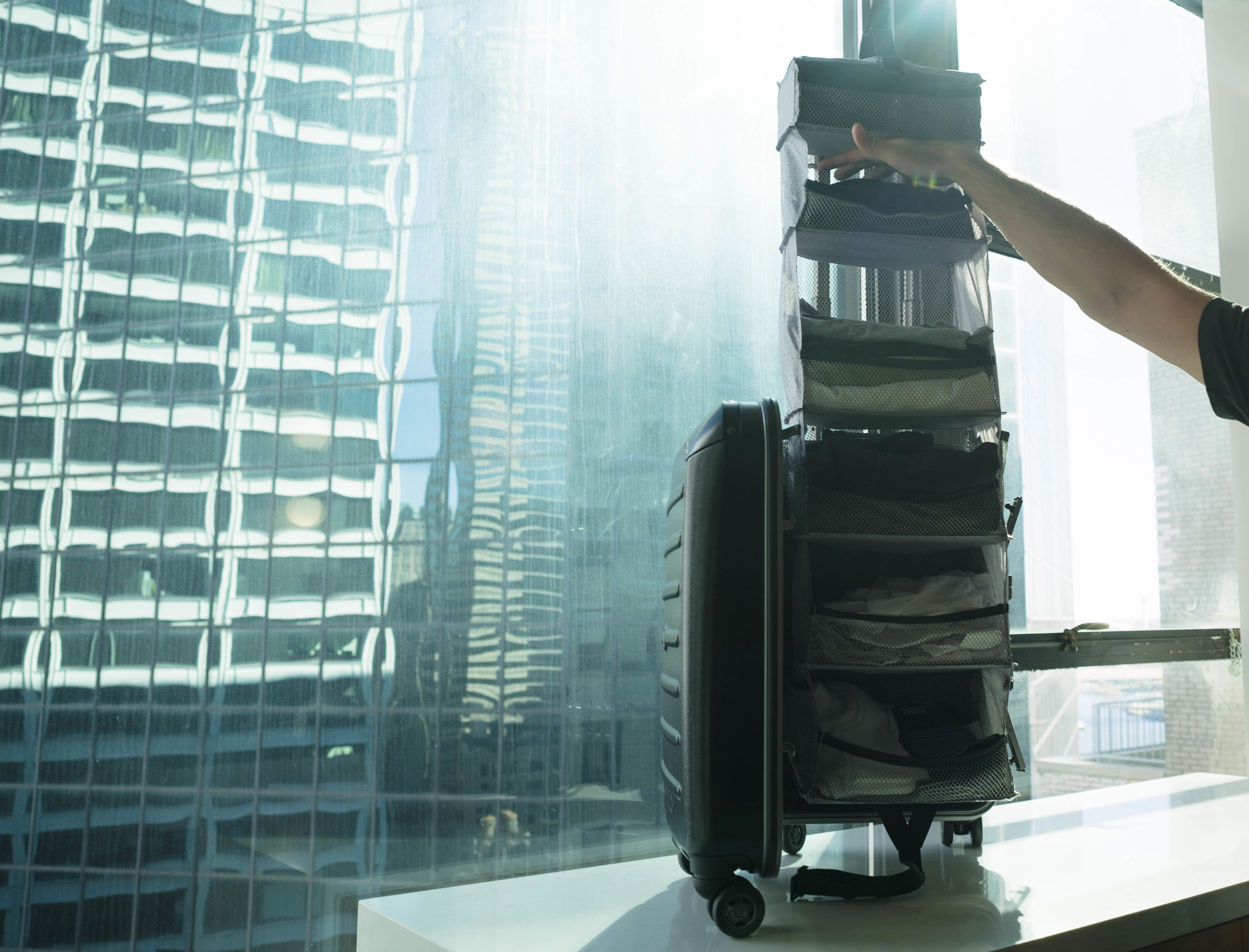Designer uses VR to design award-winning prototype carry-on bag.
When it was released in 2016, Tilt Brush was heralded as VR’s killer app. A tool that has been used to create magnificent virtual paintings—Google even started an artist in residence initiative—much of the program’s hype focused on its ability to create beautiful landscapes and quirky characters. But as more designers put on VR headsets, Tilt Brush is quickly becoming a tool to help inspire the inventions of the future.
Take, for instance, Adrian Solgaard. Founder and CEO of Solgaard Design, the Vancouver entrepreneur has created a range of products including a bicycle lock devised to hide inside the seat post, a hexagonal-shaped watch for more efficient timekeeping, and a line of smart backpacks. Like most creators, he planned his inventions with a pen and paper—until a chance meeting with a friend put him inside the sandbox world of Tilt Brush.

A few weeks after painting in the program, he transformed his 3D sketches into the prototype for one of Time Magazine’s 50 Best Inventions of 2018.
“It was my first experience of VR,” Solgaard says on the line from a meeting in Florida. “The first thing I did was draw up a car. It was just like a four year old would draw—with a trunk, and a hood, and the wheel wells. I drew that first in 2D, and then I walked beside it and then I drew a grill, and then I drew the other side, and then I sat down where the driver seat was. I put myself there with a wheel, and a giant dashboard. It was just like being in the real thing. And that’s when I started to think, ‘Hold on, I’ve had this idea I’ve been thinking about for a few months. I need to show this’.”
For three years, Solgaard had been travelling the world to secure funding and retail placement for his products. The young inventor had no fixed address, and was living out of his suitcase. Taking just one piece of luggage and one carry-on bag, he found himself dumping their contents on the floors of international hotel rooms as he rummaged for a dress shirt that hadn’t crumpled in transit, or a spare pair of socks.
Rather than become frustrated by that inconvenience, however, Solgaard spied an opportunity.

“I realized that nobody really had solved that problem of making such a big mess every time you unpack, everywhere you go,” he says. “And that big time suck of constantly packing and unpacking things. So I had this idea for a suitcase that had a shelving system—a hanging shelf that could be suspended on the handle. That way, you would never have to unpack, because you could see everything, and it could all easily be picked out.”
The product he envisaged was a four-wheel rolling suitcase. High end, it would have a soft plush handle, and an aluminium frame. The shelving system would pull up like a coordinated concertina, and its compression would allow the user to pack it down easily into the case. He would call it the Carry-On Closet.
“It took all of two minutes to draw it up in VR,” he continues. “The complexity of the product was making a suitcase that wouldn’t fall over. So to be able to visualize it in 3D, and say, ‘Okay, here’s where the shelves are, and here’s where the clothes are’—seeing that allowed me to imagine the weight systems, and figure out that the door would need to sit open to support it. You could see all the pieces coming together—it was like designing on steroids. Three days later, I’d made a physical prototype.”

Selling out orders as quickly as he could manufacture them, Solgaard and his Carry-On Closet caught the eye of Time Magazine, which reached out for an interview about the product. Not long after, he heard the news that the suitcase had made the famous list of inventions, and that he would see his product on newsstands across the globe. Without VR, he acknowledges, it would have been much more difficult to design his creation.
“I absolutely think that Tilt Brush is a medium that could benefit other inventors,” he says. “It’s so useful. You can save yourself a lot of time and headaches if you’re able to see how things function to that degree, and take that back-of-the-napkin sketch to the next level. More than just seeing something in 2D, VR helps you really understand it.”
Image Credit: Solgaard Design
The post Tilt Brush Behind One Of Time Magazine’s 50 Best Inventions Of 2018 appeared first on VRScout.
from VRScout https://ift.tt/2Au2jUo
via IFTTT
No comments:
Post a Comment